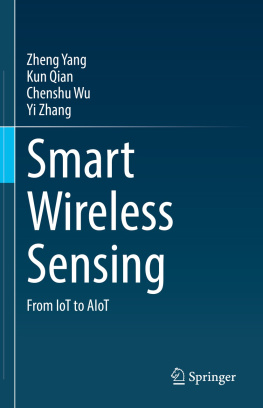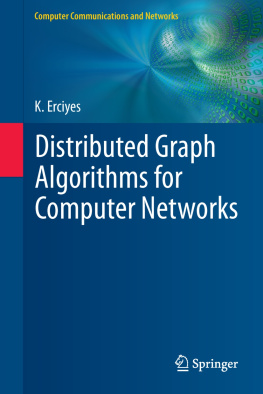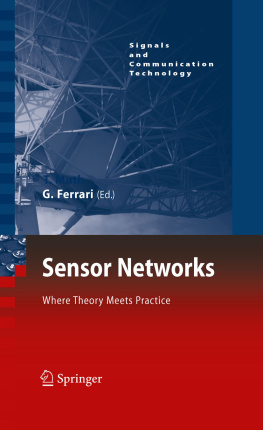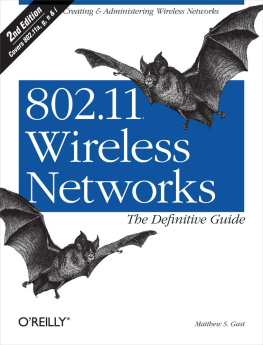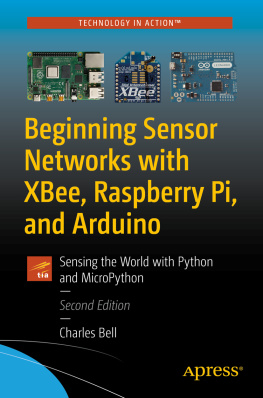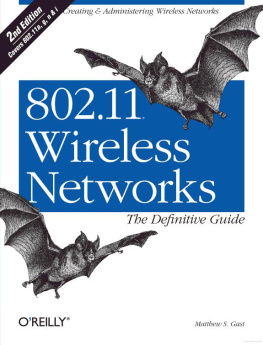Index
A
- actuators
- addressing
- aggregation
- antenna
- applications
- animal monitoring
- animal recognition
- bridge monitoring
- design and deployment
- fire detection
- Great Duck Island
- Murphy loves potatoes
- requirements analysis
- tunnel monitoring
- vineyard monitoring
B
- base station
- battery
- capacity
- modelling
- problems
- big-O notation
- body sensor network
- books, recommended
- broadcast
C
- C/C++, xiv
- clock
- accuracy
- drift
- jitter
- offset
- rate
- resolution
- precision
- skew
- clustering
- geographic
- nearest sink
- random
- Collection Tree Protocol (CTP)
- communication stack
- sensor network communication stack
- communication zones
- compression
- compressive sensing
- Contiki
- cyber-physical system
D
- death (node)
- delay
- directed diffusion
- discharge curve
- duty cycle
E
- Estimated Retransmissions (ETX)
- event handler
- events-based programming
- exposed terminal problem
F
- face routing
- fairness
- finite state machines
H
- handshake
- hardware
- hidden terminal problem
- hop
- Huffman coding
I
- interference
- Internet of Things
- ISA100
L
- links
- burstiness
- error control
- estimation
- management
- metrics
- neighborhood management
- problems
- symmetric and asymmetric links
- link quality indicator
- linked lists
- localization
- anchors
- fingerprinting
- iterative
- mules
- ranging
- triangulation
- trilateration
- location
M
- medium access
- B-MAC (Berkeley MAC)
- Box-MAC
- CSMA (Carrier Sense Multiple Access)
- S-MAC (Sensor MAC)
- TDMA (Time Division Multiple Access)
- memory
- implementation example
- management
- random access
- static
- volatile
- microcontroller
N
O
- operating systems
- atomic operations
- blocking
- Contiki
- CPU scheduling
- events
- interrupts
- memory management
- multitasking
- preempting
- proto-threads
- tasks
- threads
- oscillator
P
- packet management
- packet reception ratio (PRR)
- participatory sensing
- path
- path loss
- physical layer
- power consumption
- preamble
R
- radio
- electromagnetic spectrum
- modulation/demodulation
- modulation code
- waves
- random backoff
- received signal strength indicator (RSSI)
- requirements analysis
- routing
- convergecast
- multicast
- unicast
S
- sensor
- active
- calibration
- coverage
- errors
- fusion
- model
- passive
- signal-to-noise-ratio (SNR)
- simulator
- Cooja
- energy expenditure model
- mobility model
- models
- OMNeT++
- random waypoint model
- traffic model
- wireless propagation model
- unit disk graph model
- sink
T
- throughput
- time difference of arrival
- time synchronization
- lightweight tree synchronization
- NoTime Protocol
- reference broadcast synchronization
- topology control
- transmission range
- triangulation
- trilateration
W
- wave propagation
- attenuation
- diffraction
- Doppler effect
- reflection
- refraction
- scattering
- WirelessHART
- wireless sensor network
Z
WHAT ARE WIRELESS SENSOR NETWORKS?
This chapter introduces wireless sensor networks, what are they as well as what types and applications exist. If you have previously worked with wireless sensor networks and know about their possible application areas, you may want to skip this chapter.
1.1 Wireless Sensor Networks
Wireless sensor network (WSN) is a collective term to specify a rather independent set of tiny computers with the main target of sensing some physical property of their environment such as vibration, humidity, or temperature. They consist of a few to thousands of sensor nodes, often also referred to as nodes or sensors, which are connected to each other via wireless communications. Typically, there is also at least one special node, called the sink or the base station, which connects the sensor network to the outside world. provides a general example of a sensor network.
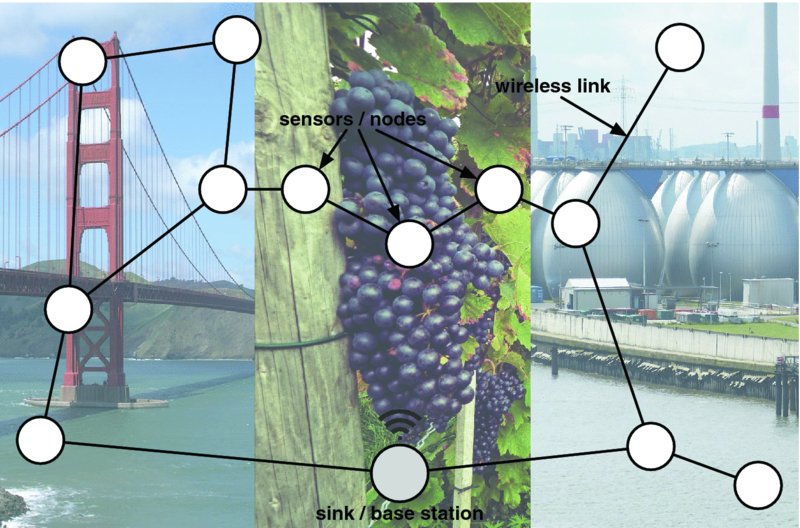
A typical sensor network with several sensor nodes and one base station. The sensors are connected to each other via wireless links, whereas the base station is typically more powerful and connected to the outside world. The application areas and environments are endless!
There are several assumptions or general properties of WSNs, which make them different from other types of wireless networks.
The resources of individual sensor nodes are highly limited. In order to cover large areas for monitoring, the individual sensor nodes need to be cheap. In order to be cheap, their components need to be cheap. Thus, the absolute minimum is installed and used on sensor nodes so their hardware resembles more of a PC from the 1980s than a modern device. All the properties and limitations of sensor networks come from this minimal hardware design. For example, this is the reason why not each of the sensor nodes can be equipped with a GPS receiver and a GPRS antenna for communication, but instead only one node can usually afford it (the sink/base station).
The wireless links are spontaneous and not planned. Different from other wireless networks, such as Wi-Fi hotspots, WSNs are not carefully planned to perfectly communicate and enable specific service quality levels. Instead, the assumption is that each of them tries to detect its brothers and sisters, and to exchange some minimally required data with them. Thus, WSNs are deployed (installed) quickly and without much knowledge of the environment. Existing experience with real WSNs and some theoretical foundations help installing more robust and self-sustainable networks than simply spreading them around the environment. However, the original dream of throwing sensor nodes out of an airplane to monitor thousands of square kilometers remains a dream.
The sensor network senses some phenomenon and needs to transfer the data to an external user. There is always something to sense out there: humidity, temperature, vibration, acceleration, sun radiation, rain, chemical substances, and many others. The main target of a sensor network is to sense some phenomenon and to transfer the gathered information to the interested user, typically an application residing somewhere outside the monitored area. The limited resources on the sensor nodes do not allow them to process the information extensively locally.





